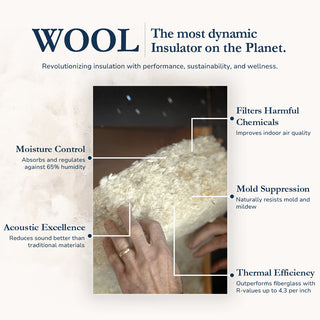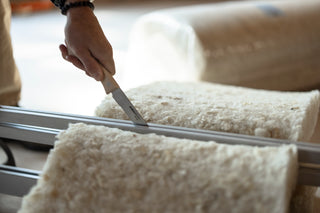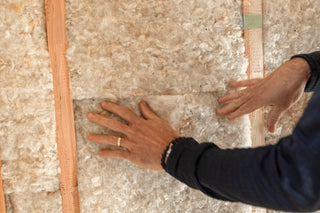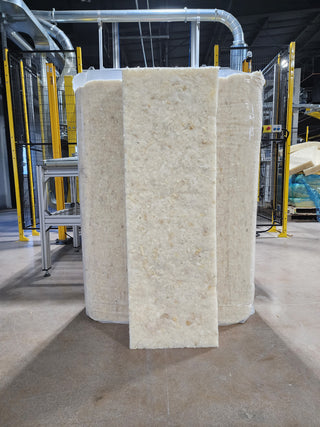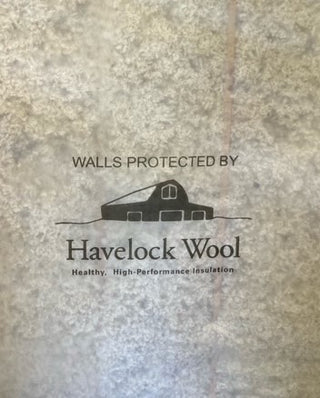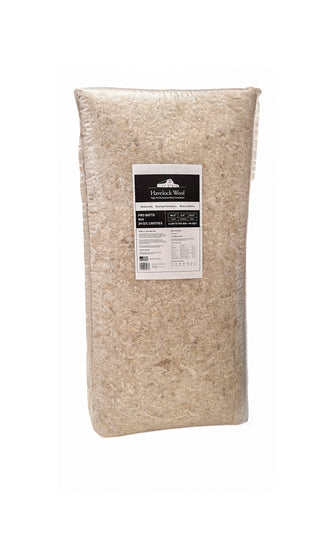
Applications
Residential Wool Insulation
Healthy homes start with smart materials. Wool insulation keeps air cleaner and comfort consistent.
Comfort Built to Last
Designed for modern living, wool insulation delivers unmatched thermal performance, clean air, and peace of mind for families who care about what’s behind their walls.

Healthy Indoor Air
Wool insulation helps filter harmful chemicals like VOCs and formaldehyde from the air. With no added toxins, it supports a healthier living environment for the people and pets you care about most.

Reliable Thermal Control
Wool naturally regulates temperature and moisture. It keeps heat inside during winter and blocks it out in summer, helping reduce energy use while staying effective over time.
Havelock Wool PRO Batt insulation - R14 | 16" OC
- Unit price
- / per
Description
Havelock Wool PRO batts offer the ultimate solution for healthy, high-performance insulation. Made from natural wool, our batts regulate temperature, control moisture, and improve indoor air quality. These inherent characteristics help maintain temperature levels and reduce sound transfer - prioritizing health and comfort. Designed for walls, floors, and ceilings, they’re easy to handle, safe to install, and built to last.
Ordering in bulk? Pallets lower the cost per bag and reduce shipping costs. Each pallet covers 1080 sq ft.
Adding product to your cart
Attic Insulation
Retain heat and prevent energy loss by upgrading the attic with breathable, high-performance wool.
Wall Retrofits
Ideal for renovations, wool installs easily and improves thermal and acoustic comfort without irritation.
Basement Protection
Naturally mold-resistant, wool adds breathable insulation in below-grade areas where moisture can be a concern.
New Construction
Build from the ground up with an insulation choice that delivers on sustainability, safety, and long-term performance.
$225.00
- Unit price
- / per
In stock
$48.00
- Unit price
- / per
In stock
$180.00
- Unit price
- / per
In stock
$95.00
- Unit price
- / per
In stock
$20.00
- Unit price
- / per
In stock
$225.00
- Unit price
- / per
In stock
$175.00
- Unit price
- / per
In stock
Havelock Wool PRO Batt insulation - R14 | 16" OC
Regular price
$2,640.00
from $110.00
- Unit price
- / per
Regular price
$2,640.00
from $110.00
- Unit price
- / per
In stock
Havelock Wool PRO Batt insulation - R14 | 24" OC
Regular price
$2,640.00
from $220.00
- Unit price
- / per
Regular price
$2,640.00
from $220.00
- Unit price
- / per
In stock
Havelock Wool PRO Batt Insulation - R22 | 24" OC
Regular price
$2,640.00
from $220.00
- Unit price
- / per
Regular price
$2,640.00
from $220.00
- Unit price
- / per
In stock



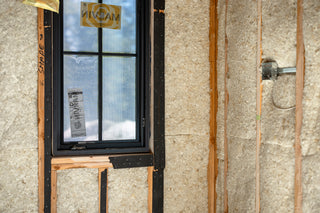
Frequently Asked Questions
Yes. Wool is naturally non-toxic and contains no added formaldehyde or harmful chemicals, making it safe for children, pets, and anyone sensitive to indoor air quality.
Wool actively absorbs and binds indoor air pollutants, including volatile organic compounds, helping to maintain a cleaner, healthier home environment.
Wool offers superior moisture control, does not off-gas, and is easier and safer to install. It also maintains performance over time without degrading.
Wool’s thermal performance reduces heat loss in winter and heat gain in summer, which can ease the load on heating and cooling systems.
Absolutely. Whether you’re updating a single room or an entire home, wool insulation offers an immediate improvement in comfort and indoor air quality.


